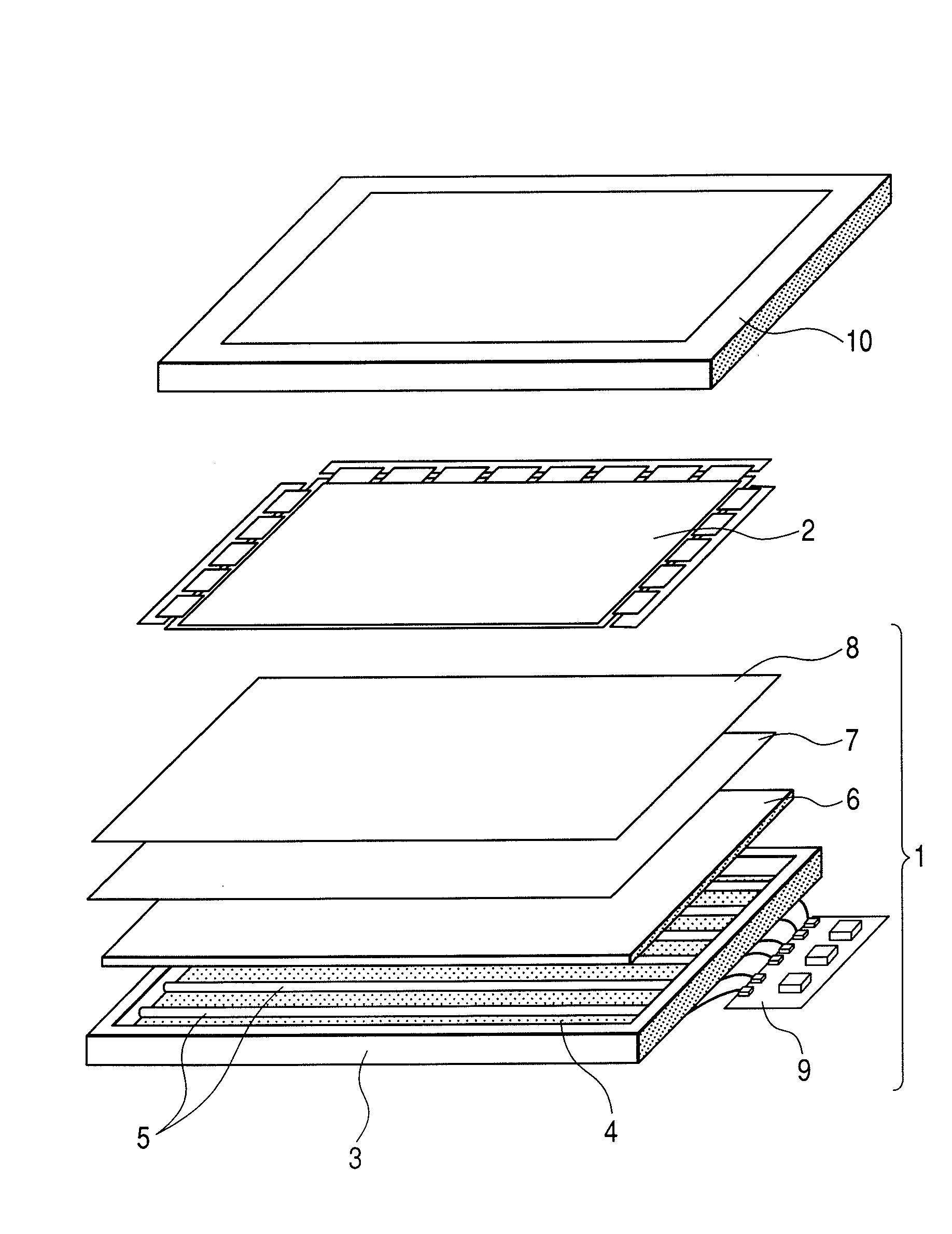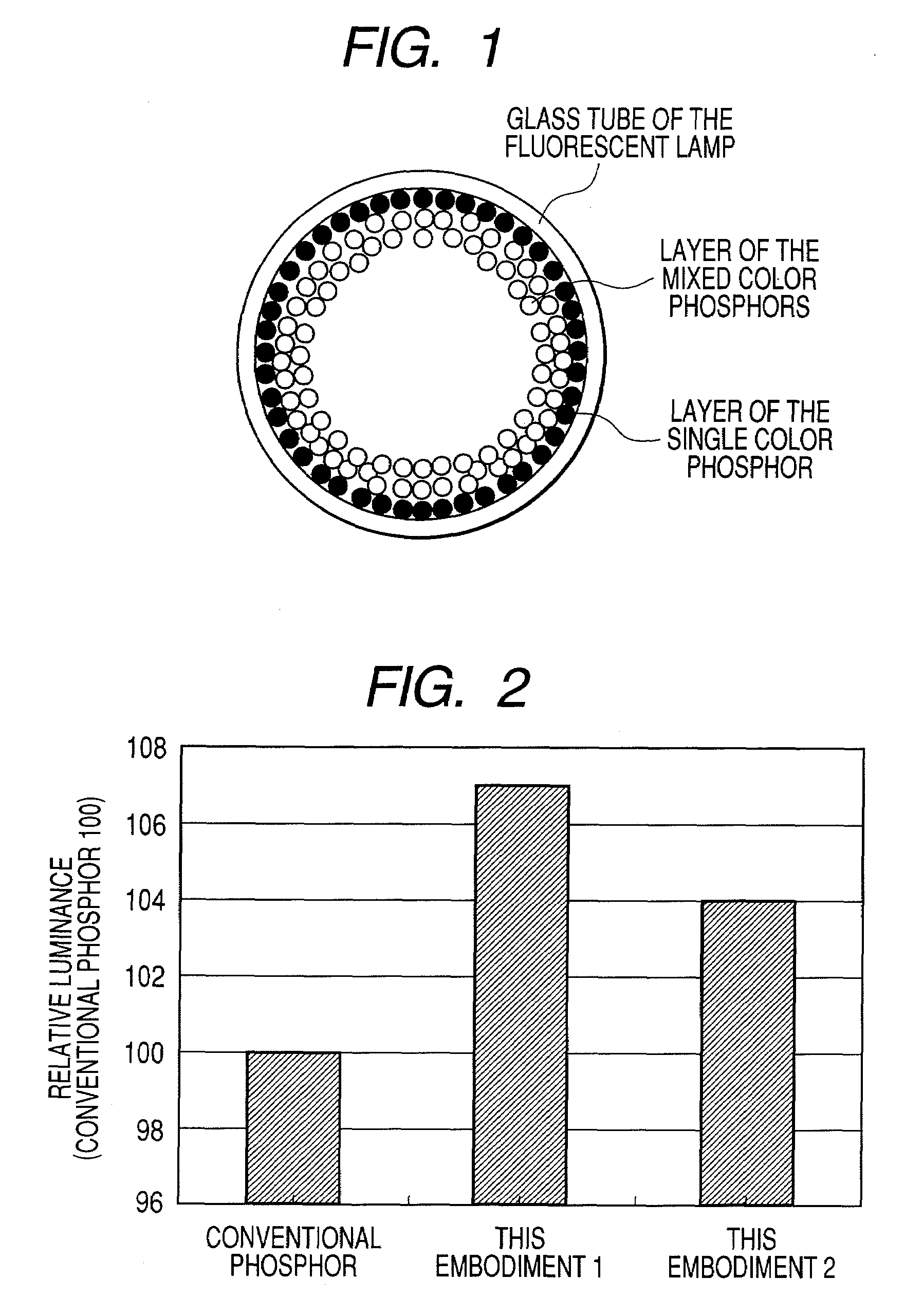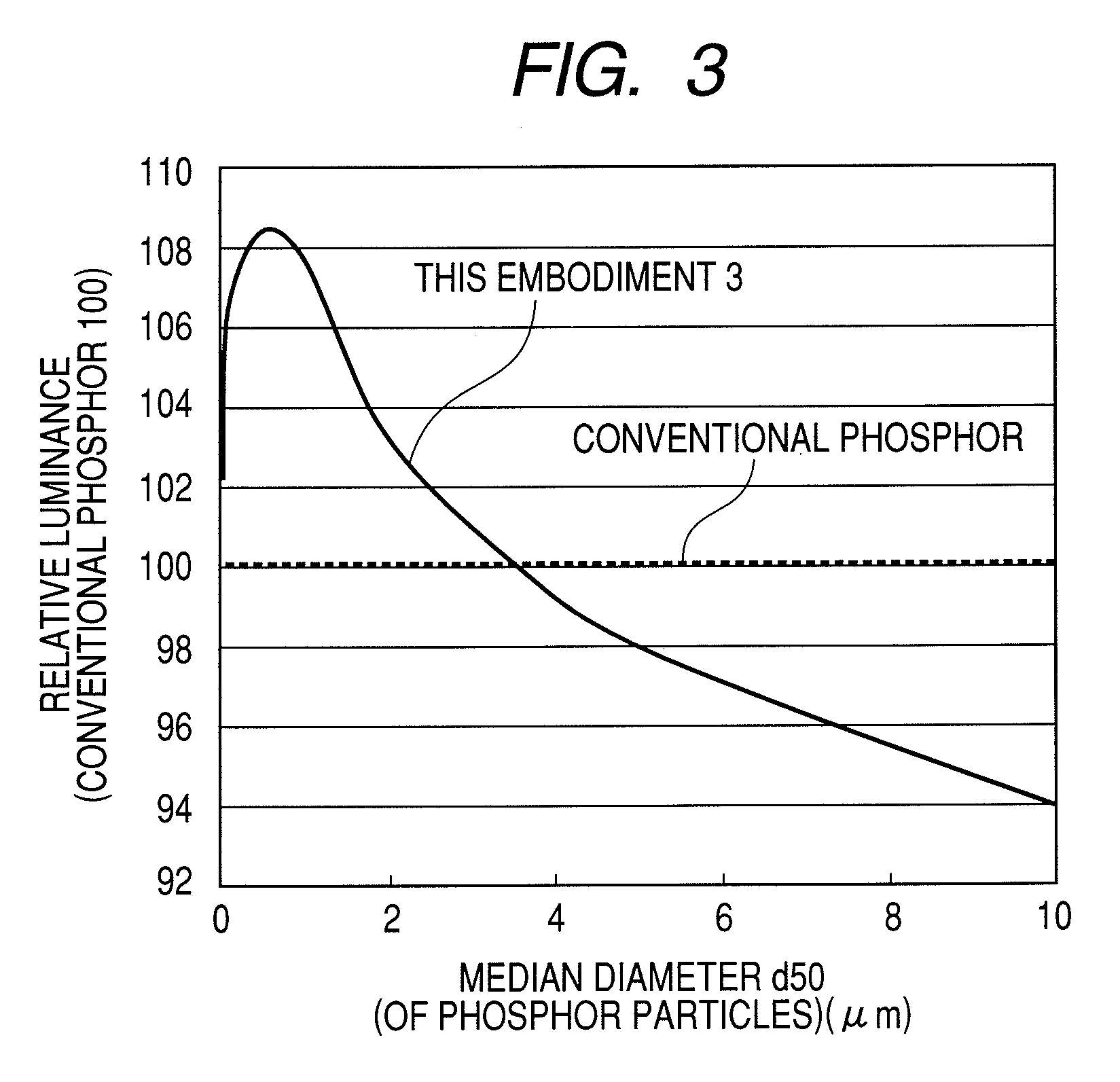Fluorescent lamp and imaging device usign the same
a fluorescent lamp and imaging device technology, applied in the field of phosphor layer, can solve the problems of image quality and important reduction of variation, and achieve the effects of reducing variation in chromaticity, enhancing luminance, and increasing manufacturing cos
- Summary
- Abstract
- Description
- Claims
- Application Information
AI Technical Summary
Benefits of technology
Problems solved by technology
Method used
Image
Examples
first embodiment
[0046]An imaging device having a structure according to an aspect of the present invention was produced by the following method, and the property thereof was evaluated. A liquid crystal display device in the present embodiments is composed of a back light unit 1 and a liquid crystal display panel 2, as shown in FIG. 4. The back light unit 1 includes a white light source 5, a drive circuit 9 (inverter) for lighting the light source, a frame 3, a reflector 4, a diffuser plate 6, a prism sheet 7, and a reflective polarizer 8. The above back light unit is an example; therefore, the unit need not include all of the component parts mentioned above, or may add another part. In short, a back light unit means what illuminates the liquid crystal display panel 2 in order to form images.
[0047]In the present embodiments, a CCFL shown in FIG. 5 was used as a white light source. At the time, a CCFL using a phosphor layer which was mixed with a red phosphor, green phosphor, and blue phosphor was pr...
second embodiment
[0058]The second embodiment was produced in the same way as with the first embodiment. A difference between the second embodiment and the first embodiment is that in the second embodiment, two layers of phosphors were formed: one layer was formed by using a single suspension of a blue phosphor BaMgAl10O17:Eu2+; and the other layer by using a suspension mixed with three color phosphors.
[0059]Particles of these all phosphors used had diameters of which median diameters d50 were in the range of 1.0 μm to 10.0 μm. According to the second embodiment, a layer structure of the present invention, which is shown in FIG. 1, was produced. In this case, a layer of the single color phosphor of FIG. 1 is made of a blue phosphor.
[0060]White luminance was measured in the conventional phosphor and the second embodiment, and the result is shown in FIG. 2, in which values of the second embodiment show relative luminance against the values of the conventional phosphor which are 100. It can be understoo...
third embodiment
[0063]The third embodiment was produced in the same way as with the first embodiment. A difference between the third embodiment and the first embodiment is that in the third embodiment, two layers of phosphors were formed: one layer was formed by using a single suspension of red phosphor Y2O3: Eu3+; and the other layer by using a suspension mixed with three color phosphors.
[0064]At the time, a layer of the red single color phosphor was evaluated in the property thereof as median diameters d50 thereof were varied within the range of 0.05 μm to 10 μm, in which the median diameters d50 were measured by a “Coulter Counter” (Beckman Coulter, Inc.). Particles of all phosphors including red phosphors, which were used for forming the layer of the mixed color phosphors, had a constant and fixed value of median diameters d50 thereof, the median diameters d50 being in the range of 1.0 μm to 10 μm, in which the median diameters d50 were measured by a coal tar meter.
[0065]According to the third ...
PUM
 Login to View More
Login to View More Abstract
Description
Claims
Application Information
 Login to View More
Login to View More - R&D
- Intellectual Property
- Life Sciences
- Materials
- Tech Scout
- Unparalleled Data Quality
- Higher Quality Content
- 60% Fewer Hallucinations
Browse by: Latest US Patents, China's latest patents, Technical Efficacy Thesaurus, Application Domain, Technology Topic, Popular Technical Reports.
© 2025 PatSnap. All rights reserved.Legal|Privacy policy|Modern Slavery Act Transparency Statement|Sitemap|About US| Contact US: help@patsnap.com



